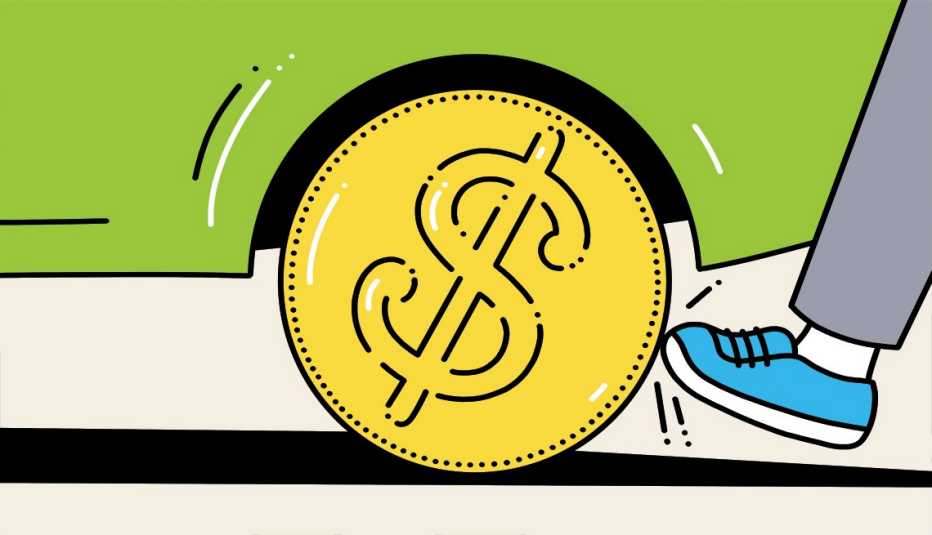Staying Fit


Your travel bucket list doesn’t have to break the bank. To help you fulfill your globe-trotting goals — sans the high spending — we talked with travel industry professionals and writers about their favorite cost-saving tips. Here are 25 of the best ways to save on travel, and don’t forget to share your own budget-travel tips in the comments section at the bottom of the page.
1. Try a price prediction tool
Some budget travelers swear by only booking their flights on Tuesdays. Others suggest booking on Saturdays. But according to Nick Ewen, senior editorial director for The Points Guy, “that ‘day to book’ thing is largely a myth.” What could matter? The day of the week, or the time of day, you actually fly. Tuesdays, Wednesdays and Saturdays are often cheaper days to fly than Fridays or Sundays. Because prices fluctuate, Ewen recommends using tools such as Hopper, Google Flights or Kayak to track and monitor when a flight is a good deal and when it’s not. “Price prediction tools will essentially say, ‘Right now, prices on this route are high, but we expect them to drop within the next 30 to 45 days,’” he says, noting it’s not always a guarantee — but “these tools can help you make a more informed decision.”


AARP Membership— $12 for your first year when you sign up for Automatic Renewal
Get instant access to members-only products and hundreds of discounts, a free second membership, and a subscription to AARP the Magazine.
2. Cash in those airline miles
If you’ve built up miles with a specific airline, use them, says Ewen. “Any opportunity to use your miles to keep cash in your pocket is a good redemption,” he says. “I often see people who are new to the world of loyalty programs, points and miles, and they’re afflicted with analysis paralysis.” Instead of using their perks, they sit on them — but doing so could be costing you. “Points and miles are terrible long-term investments; they only lose value over time,” Ewen says. If you want to double-check the miles-to-money conversion before booking, try online calculators that tabulate this equation, including NerdWallet, Omni Calculator and The Point Calculator.
3. Track and modify your trip
Here’s even more incentive to book: In recent years, a growing number of U.S. airlines, including United, Delta, American and Alaska, have removed change fees. That means if you book a ticket, then see a better flight deal, you can modify your reservation and pocket the difference. This goes for not only flights booked with dollars, but also miles. “Since the pandemic, just about every airline, aside from basic economy status, has made award tickets, generally speaking ... are now fully refundable,” Ewen says.
4. Keep tabs on your credit card discounts
If your credit card comes with a steep annual price, know that “oftentimes there are many ways to offset that fee,” Ewen says. Many cards offer travel credits, complimentary companion passes and other lifestyle perks. But to benefit, you need to actually use them. “Credit card issuers rely on people to not be informed; that way they can offer a perk that [would] cost them money, but they’re not actually going to have to fork that money over,” he says. To keep tabs on your card’s perks, which include everything from rideshare and TV subscription credits to grocery discounts, Ewen suggests checking your account every month and creating a spreadsheet of all available offers.


5. Look into living the lounge life
Airport lounges can help you save on overpriced terminal fare, and typically offer complimentary food and drink (in many cases alcoholic beverages), showers, less-crowded bathrooms, numerous charging ports and comfortable seating. Lounge life can improve the air transit experience, but there is a cost. Many airline lounges require a paid membership or can be accessed by paying annual fees on travel credit cards. These several-hundred-dollar annual fees come with a variety of perks, such as the opportunity to bring one or several guests free of charge. To determine if lounge membership fees are worth it, Ewen suggests crunching the numbers to see how often you plan to travel and how much you and your potential airport lounge guests could save on amenities. Additionally, if you do decide to obtain lounge membership, make sure your home or go-to airport has that specific airline lounge, he says.
6. Don’t shrug off shoulder season
Want to cut spending and dodge congestion? Travel journalist, photographer and founder of the blog Camels & Chocolate Kristin Luna has some advice: “Traveling in [the] off-season, or shoulder season, is my favorite way to travel — not only do you save money, but you avoid the crowds,” she says, noting that, on a November trip to Iceland — well outside the summer high season — she and her family saved big: “We paid roughly half of what we would have had we decided to travel in summer months.” They also saw a fraction of the crowds. Of course, traveling in the shoulder season can come with a downside, like seasonal closures or bad weather. Before booking a shoulder-season adventure, make sure the restaurants, attractions and experiences you hope to enjoy are still available.
7. Skip the gas pump
Another way to save on rental cars: Go electric. “It may wind up being cheaper than filling up with gas, especially if you’re outside the U.S.,” says Ewen, noting gas in many destinations across Europe can be “incredibly expensive.” That said, an EV isn’t always the best option. “The big thing is going into it knowing exactly how you’re going to charge the car,” Ewen says. If you’re largely in the countryside, where there are minimal EV charging stations, you could end up in trouble. But if you’re mostly traveling between cities or large urban areas, you should be in the clear — although it’s smart to research EV guidelines for specific countries and regions before you book. For that, EV-focused websites like Chargemap, Electromaps and PlugShare can help.
8. Use credit card rental car insurance
If you have a travel credit card, odds are it includes rental car insurance — but you have to follow a few important steps to use it. First, decline all of the rental car company’s protection offerings, Ewen says. This includes roadside assistance, collision damage waiver — any and all protections. If you do have an issue during your trip — say, a cracked windshield — you can submit the claim by contacting your credit card company. Before you rely on this method, it’s important to know what’s included with your card’s insurance. “Coverage on car rentals through credit cards is limited to damage and theft,” Ewen says. If you have questions, call your credit card company (via the phone number on the back of your card) to confirm. When you prefer more coverage than what’s offered through your credit card — or you’d rather avoid dealing with the potential claims process — consider the rental car company’s options, but do your research ahead of time to avoid being pressured into any decisions.




































































You Might Also Like
Secrets from a Flight Attendant
How to make your trips more comfortable and easy
Smart Guide to Cruises
Everything you need to know for smooth sailing
Be a Citizen Scientist at National Parks
You can help staff identify invasive species and more
AARP Members Only Access
Enjoy special content just for AARP members, including full-length films and books, AARP Smart Guides, celebrity Q&As, quizzes, tutorials and classes
Recommended for You